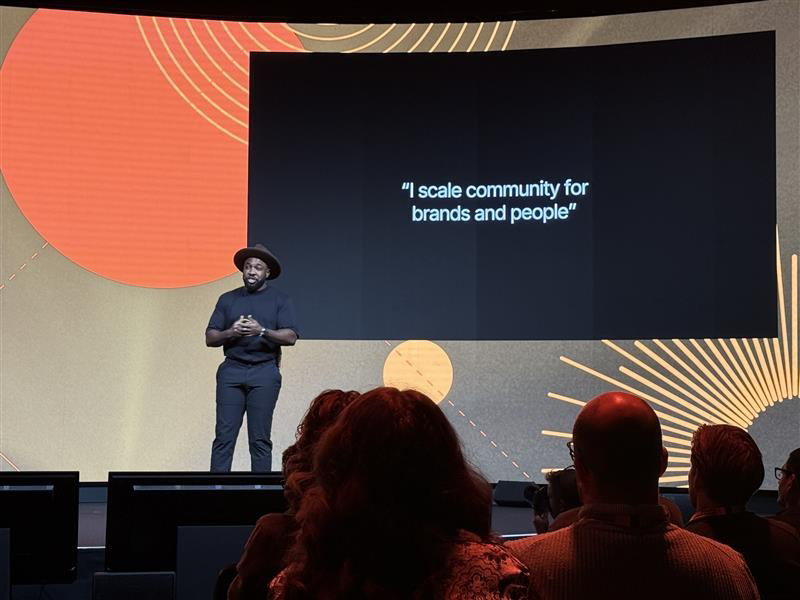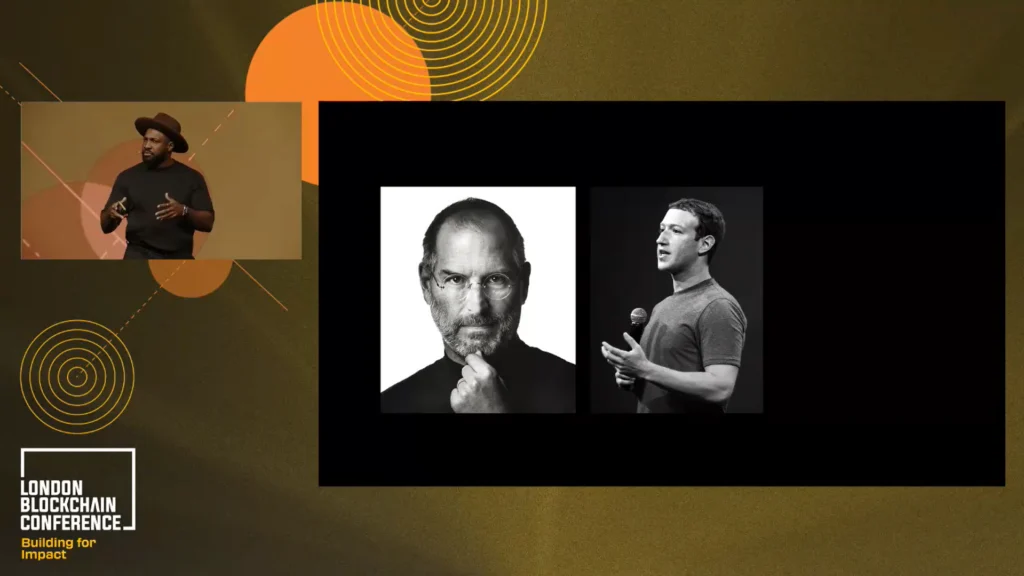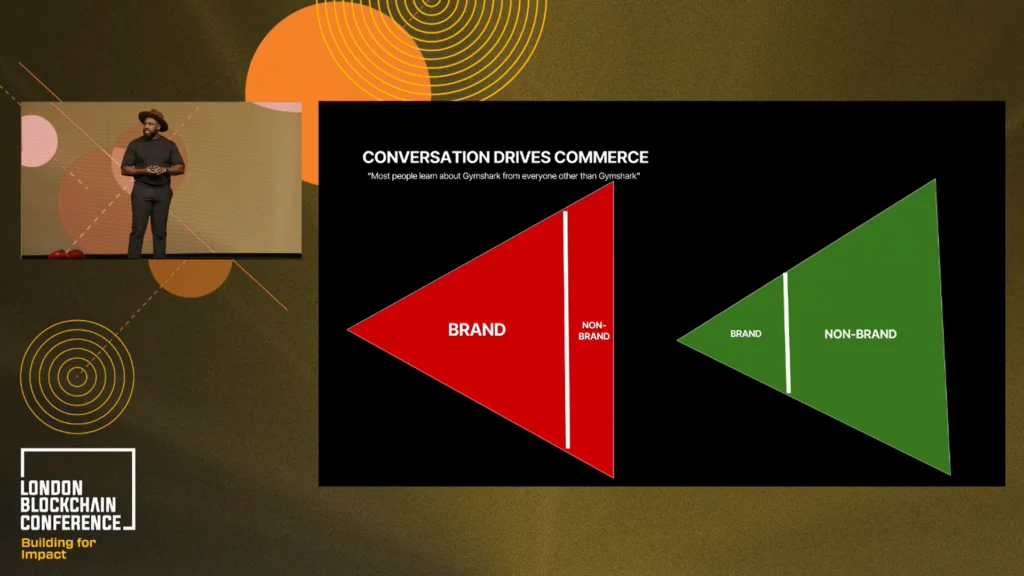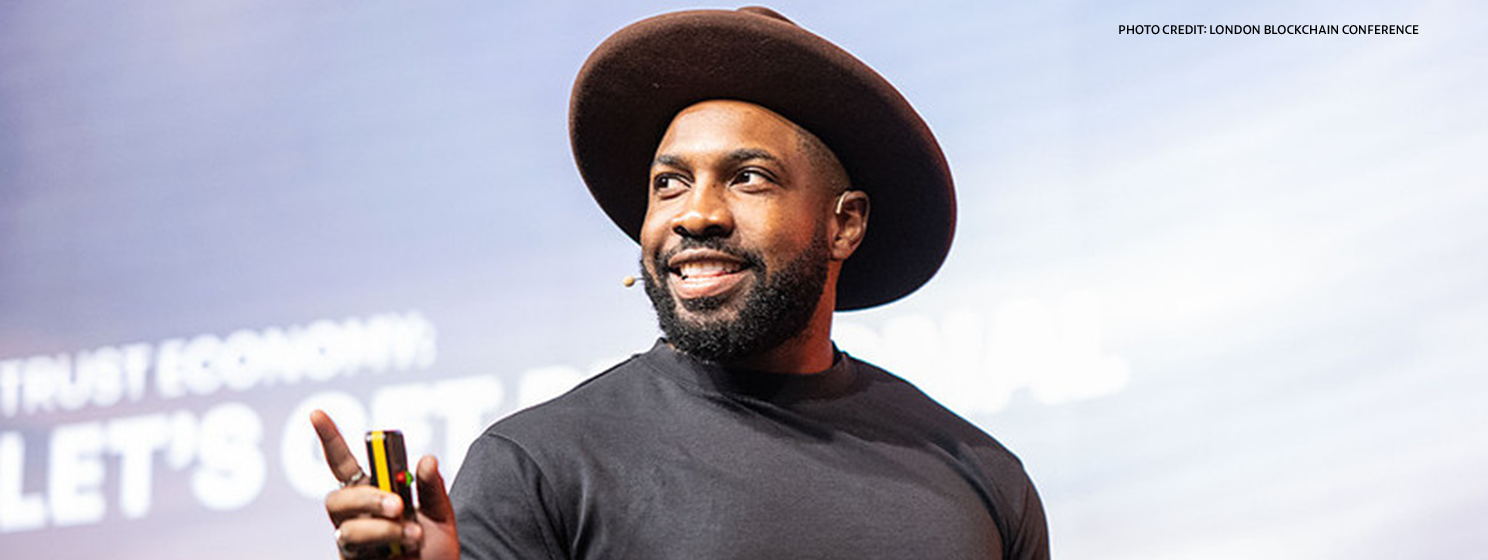|
Getting your Trinity Audio player ready...
|
Here to kickstart the second day of the London Blockchain Conference 2025: Elfried Samba, social media and branding wizard.
- Personal brand in this decentralized age
- Elfried Samba’s mission statement
- Samba’s experience at Gymshark
- Samba’s philosophy
- Using conversation for sales
The decentralized age is substantial, but it’s also laden with hype and overzealous promise. In that environment, personal brand becomes even more important: founders, developers, and other innovators must find a way to cut through all that noise if they and their products are to stand out.
Fortunately for the early morning crowd that sat in front of the conference’s glittering Visionaries Stage, standing out is precisely Samba’s wheelhouse. He’s the co-founder and CEO of marketing agency Butterfly Effect, having previously served as the Global Head of Social Content for Gymshark, where he helped grow the brand’s following from 1.5 million to 20 million, turning it into a highly successful modern fitness success story.

Samba delivered his mission statement as soon as he got on stage. Simply:
“I scale community for brands and people.”
He started with a story. Being born in the Democratic Republic of the Congo, Samba moved to the United Kingdom as a child. He knew he wanted to make the most of what he saw as a golden ticket, and immediately started looking for role models.
First up, his parents were natural choices—his father a doctor and his mother a creative.
Of course, he picked up Steve Jobs after watching his famous keynotes. What particularly fascinated Samba was Jobs’ ability to tell a story, particularly around technology—distilling often complex ideas into simple, digestible packages.
Looking to emulate these role models in practice, Samba needed a job. He’d become aware of a new, growing brand called Gymshark, particularly thanks to the common sight of two 19-year-olds driving expensive cars through Birmingham: they were the founders of Gymshark.
He saw the company had a social media role advertised on LinkedIn, but it already had hundreds of applicants. So, Samba knew he needed to stand out. He added everyone at Gymshark and began posting content to his feed that he thought they’d find valuable. Within six months, he had the job.

Samba spent seven years at Gymshark, building an impressive resume as he did: Zuckerberg shoutouts, being dubbed the biggest brand ever.
- 24 employees to 1000
- 1m followers to 20m
- £8 million ($10 million) – £1.4 billion ($1.8 billion)
All by leveraging the community. They leveraged creators, funneling community-created content through Gymshark’s channels and amplifying the message.
The aforementioned Audi-driving founders weren’t the initial focus: the face of the brand were Gymshark’s ‘athletes’—paid community members generating content for the brand. However, as the brand grew, Samba realized that customers were buying into the reason behind the product, rather than the product itself. Samba thought back to the COVID-19 pandemic, when brand spend reached astronomical levels. He says this damaged overall trust in brands, but Samba took another approach.
They began proliferating their channels with video content, revealing the inner workings of the business. The founder, Ben Francis, has a YouTube channel, giving the audience a direct line to the upper echelons of the brand and their motivations.
After leaving Gymshark, Samba started Butterfly Effect, effectively setting about exporting the model he had refined at Gymshark to his own private agency, passing the knowledge on to other new brands.
His philosophy comes down to trust.
“Whatever you’re doing, you’re scaling for trust. People have been bombarded with so many messages, there’s so much AI, people don’t know what to trust.”
One of the key reasons is that IQ is becoming democratized, so the only answer now is EQ. The brands that can still evoke a sense of emotion are those that scale. If you’re still relying on facts, figures, and product references to win, it’ll be challenging to do that. You need to get people to feel something.
Samba came prepared with revealing statistics about how people interact with brands in the modern era.
88% of people trust word of mouth; the most influential of these are friends and family, followed by online reviews, then (and sliding further down the list all the time) creators. Lastly, they trust the brands themselves: only 30% of consumers trust brand messaging directly—proof that traditional marketing alone can’t drive belief.
82% are more likely to trust a company when its senior executives are active on social media. 77% are more likely to buy when the CEO uses social media. 50% of millennials expect CEOs to speak out on societal issues.

“Conversation drives commerce,” said Samba.
This was a lesson learned from his time at Gymshark: most people who learned about the brand from sources other than Gymshark.
So, where is the conversation at regarding the digital currency space? Samba’s first point of reference is a meme that compares an influencer’s appearance from last month to this month. Last month, the influencer was on a private jet. Now, the influencer is living in a closet. His next point of reference? Sam Bankman-Fried.
“This is not a good representation of what we’re trying to do, is it? But what people hear and see on their feeds influences their actions and the way they choose to spend their money. What we need to do as an industry is change that. We need new connotations, new stories, new faces.”
He also criticizes what he sees as the overly complicated communications surrounding blockchain technology. He flashes a definition on screen: “a digital database or ledger that is distributed among the nodes of a peer-to-peer network.”
“We can do better than that!” he smiles to the crowd.
He says the question to ask is: what would Steve Jobs say? He quotes: “The most powerful person in the world is a storyteller.” Because it’s not about information—it’s about understanding.
What we need to do, says Samba, is humanize our language: when marketing the iPod, Jobs didn’t brag about it having 5GBs of storage. Instead, the story was: 1,000 songs in your pocket. In other words, sell the benefits, not the features.
In closing, Samba repeats his core thesis: make people feel something. Being known is not enough. You have to be liked. You have to be respected. These things allow you to earn trust. Most importantly, trust is earned through actions, not words.
For blockchain, what’s needed is humanization: tell better stories. Simplify the approach. Talk less, do more.
Watch: London Blockchain Conference│Day 1 Recap

 12-05-2025
12-05-2025 





